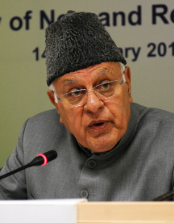MHA revises count of LWE-hit districts covered by special funding scheme to 58 from 72
New Delhi, Mar 16 (PTI) The number of Left Wing Extremism-hit districts in the country covered under the special SRE funding scheme has come down to 58 from 72 following a “comprehensive” review by the Union home ministry and the 10 affected states, official sources and records state.
The Ministry of Home Affairs (MHA) division concerned with Left Wing Extremism (LWE) issued a communication earlier this week to the chief secretaries and the directors general of police (DGPs) of these states, saying the new categorisation would be effective from the financial year beginning on April 1.
The MHA communication, accessed by PTI, says that a number of interventions, both security- and development-related, are being made by the ministry and the states and as a result, there has been a “marked improvement” in the LWE scenario.
The LWE or Maoist violence-affected districts covered under the Security Related Expenditure (SRE) scheme were last reviewed by the MHA in 2021, and at that time, there were 72 such districts spread across 10 states.
After the latest review, this number has come down to 58, according to the official sources.
These districts are provided with various grants under the SRE scheme as part of the national policy and action plan to address the LWE issue “holistically”, they said.
These districts are categorised under two broad heads — LWE-affected and Legacy and Thrust districts (LT districts).
The highest number of LWE-affected districts as per the new categorisation, out of 38 in total, is in Chhattisgarh (15), which is followed by Odisha (7), Jharkhand (5), Madhya Pradesh (3), Kerala, Telangana and Maharashtra with two each and West Bengal and Andhra Pradesh with one each.
As per the ministry, LWE-affected districts are those where violence and other Maoist activities are continuing.
These LWE-affected districts have been further sub-categorised as ‘most affected districts’, a terminology brought in 2015, and ‘districts of concern’ (DOC), which was coined by the MHA in 2021.
There are 12 ‘most affected districts’ after the latest review. This count was at 35 in 2015 and it went down to 30 in 2018 and 25 in 2021 following reviews, as per official records.
Seven of these 12 districts are in Chhattisgarh, two are in Odisha and one each is in Jharkhand, Madhya Pradesh and Maharashtra.
DOC was added to the LWE terminology to “address the resource gap where the Maoist influence was waning”. Eight districts were categorised as DOC for two years between 2021 and 2023, and all of them have now been deleted and nine new ones have been added, according to the MHA.
The latest DOC are in Jharkhand (4), Odisha (2) and one each in Andhra Pradesh, Chhattisgarh and Telangana.
‘Legacy’ districts are those which are no longer LWE-affected but support to states is required for consolidating the position and continued support in respect of security and development measures for some more time, the ministry said.
The ‘Thrust’ districts are those that are considered “prospective sites” of LWE expansion and hence, continued support would be required for capacity building of the states, according to the MHA.
A total of 20 districts are included under the LT categorisation and these are in Bihar (8), Jharkhand (6), Odisha (3), and one each in Andhra Pradesh, Chhattisgarh and Telangana.
The MHA told the states that the resources and funds envisaged in the SRE scheme to combat the LWE menace “will be utilised in a focussed manner on the districts as per the revised categorisation”.






